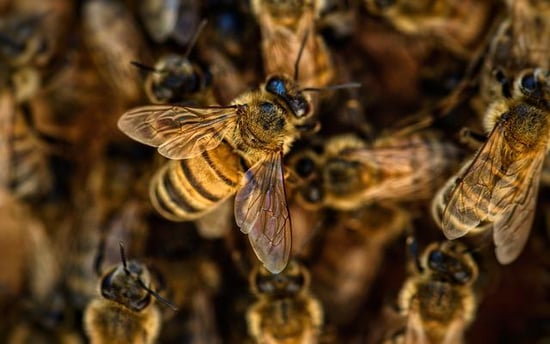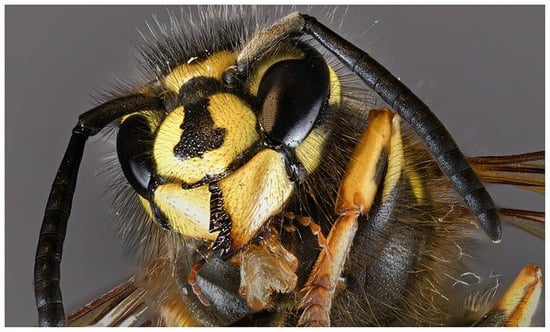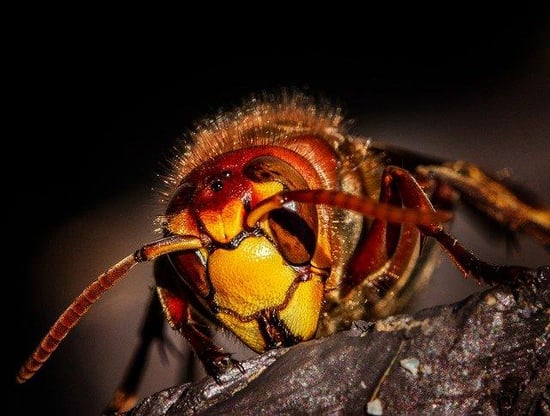Bees, Wasps & Hornets: What's the Difference?
Bees, wasps & hornets: they’re three types of airborne stinging insects that you don’t ever want to see angrily buzzing toward you. But have you ever wondered what the difference is between the 3? It can be difficult to tell which is which, especially in the moment! But it’s important that you are able to identify at least a few differences so that you know what exactly you’re dealing with if you have one (or more) of these insects on your property or nesting in your home. So, without further ado, let’s take a look at some of the major differences between bees, wasps, and hornets.
Appearance
The first and most immediately obvious difference between bees, wasps, and hornets is how they look. Let’s take a look at each one so that we can identify some of those differences.
Bees

Here’s what visually sets bees apart from the other stinging insects:
- Their bodies are usually round in shape
- They are typically black and yellow in color
- Many of them are fuzzy or hairy (which helps them collect pollen)
- They are between ¼ of an inch and 1 inch long
Wasps

While there is a bit of misconception that wasps and hornets are the same things, the truth is that they aren’t--well not exactly. Hornets are actually a type of wasp, but there are appearance factors that set them apart. Wasps:
- Have narrow or “pinched” waists
- Black, sometimes with yellow, white or orange markings
- Little hair, especially compared to bees
- ½ inch to 1 inch long
Hornets

As we mentioned before, hornets are a type of wasp, but they do have some noticeable differences when compared to bees or wasps:
- Reddish-brown with yellow stripes on their abdomen (brown hornets) or black with a white face pattern (bald-faced hornet)
- Pinched, but thicker waists than wasps
- 1 to 1 ½ inches long
Bee, Wasp & Hornet Behavior
Appearance is just one way to identify one of these stinging insects; you can also use their differing behavior to tell them apart.
- Nesting- Each stinging insect has its own nesting habits. Bees will typically nest either underground (bumblebees) or in hollow trees (honey bees).
- Wasps, on the other hand, will nest in eaves, gutters, voids, bushes, branches, and along fences--in other words, the sort of nests you typically think of when you think of a bees nest hanging somewhere outdoors is actually more than likely a wasps nest.
- Hornets typically like to nest in more secluded areas, like hollow trees and barns, but bald-faced hornets will nest in similar places to wasps, like eaves, bushes and tree branches.
- Stings- While all 3 of these insects can sting (they are referred to as stinging insects, after all) the severity of the sting and the level of aggression of the breed varies. Bees are not the most aggressive, although they certainly do sting when they feel threatened. While their stings usually only lead to mild swelling and itching after the initial pain, to someone allergic, a sting can be deadly.
Wasp stings have a similar effect, but they don’t lose their stingers after a sting (like many bees do) which means they can sting multiple times. Hornets have the worst sting of them all, usually applying the most painful sting, and can do so multiple times--and on top of it all, they’re usually the most aggressive. Like bees and wasps, an allergic reaction to a hornet sting has the potential to be fatal if not properly treated.
What to Do About Bees, Wasps, and Hornets
So now that you know a few ways to identify these three somewhat similar but ultimately different insects, what should you do? First of all, if you notice ANY of these stinging insects acting in an aggressive manner toward you, head in the opposite direction--you don’t want to get stung! After that, get in touch with us here at Thomas Pest Services and ask about our bee & wasp control, which includes nest removal and preventative treatment to nest-prone sites.


.png)
.png)
